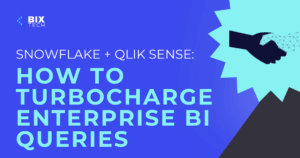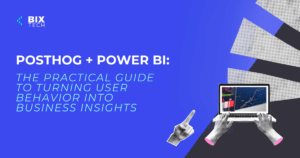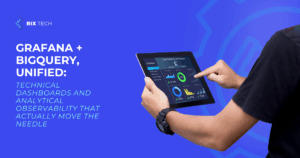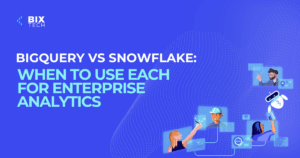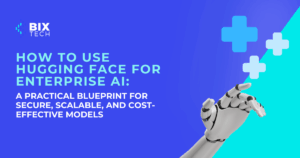Fine-Tuning LLMs for Your Industry: Mastering Data Labeling for Optimal Results

Sales Development Representative and excited about connecting people
Large Language Models (LLMs) are revolutionizing how businesses interact with data, automate workflows, and deliver smarter digital experiences. But while pre-trained LLMs like GPT-4 or Llama-3 offer impressive general capabilities, they can fall short when it comes to specialized industry tasks or nuanced language. That’s where fine-tuning comes in—and at the heart of effective fine-tuning is smart, strategic data labeling.
In this post, we’ll explore why data labeling is the linchpin of LLM customization, how to approach it for your industry, and best practices to ensure your fine-tuned model delivers real business value.
Why Fine-Tune an LLM for Your Industry?
Out-of-the-box LLMs are trained on vast, general datasets, making them great at everyday language and reasoning. However, real-world business use cases—from legal document summarization to medical record analysis or financial forecasting—demand much more domain specificity, terminology, and context awareness.
Fine-tuning allows you to adapt a general LLM to your unique workflows, products, or customer interactions. The result? Higher accuracy, relevance, and trust when deploying AI in mission-critical operations.
For example, a healthcare provider might fine-tune an LLM to understand electronic health records and medical jargon, while a fintech firm could train the same base model to interpret complex regulatory disclosures.
But the effectiveness of this process depends on one crucial ingredient: the quality and structure of your labeled data.
What Is Data Labeling—and Why Does It Matter?
Data labeling is the process of annotating your training data with the correct answers or desired outputs. For LLMs, this typically means pairing input prompts (questions, instructions, documents) with ideal model responses.
Why is this so important? Because an LLM learns by example. The clearer and more accurate your labels, the better the model will “understand” what’s required in your industry context.
Poor or inconsistent labeling leads to models that hallucinate, misunderstand, or provide unreliable answers. On the flip side, well-labeled data sets the stage for a model that’s both precise and robust.
Key Data Labeling Strategies for Fine-Tuning LLMs
Let’s dive into strategies that can make or break your LLM fine-tuning project.
1. Define Clear Labeling Guidelines
Every industry has its quirks. Before you start, develop detailed annotation guidelines that cover:
- Domain-specific terminology and acronyms
- Preferred answer style (formal, concise, data-driven, etc.)
- Edge cases and ambiguous scenarios
- Required formatting (tables, bullet points, citations)
For example, if you’re fine-tuning for legal text summarization, decide up front how to handle case citations or legalese.
2. Choose the Right Labeling Approach
- Manual Labeling: Human experts annotate each sample. This is the gold standard for nuanced or sensitive data, though it can be slow and expensive.
- Semi-Automated Labeling: Use an initial AI model or rules to generate draft labels, then have humans review and correct them. Great for scaling without sacrificing quality.
- Active Learning: Let the model flag uncertain examples for human labeling, focusing effort where it matters most.
3. Leverage Domain Experts
Nothing beats having people with real-world industry experience involved in labeling. They’ll spot subtleties that generic annotators might miss and help you avoid introducing bias.
4. Balance Your Dataset
A common pitfall is unintentional bias—if your dataset overrepresents certain topics, document types, or user intents, your model can become skewed. Strive for diversity in:
- Document types (emails, reports, chat logs)
- Topics and subtopics
- User demographics or roles
5. Iterate and Validate
Data labeling isn’t a one-and-done exercise. Continually review labeled data, look for inconsistencies, and refine your guidelines. Use a validation set to periodically test your model’s performance and catch drifts in accuracy.
Practical Example: Fine-Tuning for Customer Support Automation
Imagine you’re a SaaS company looking to automate customer support with an LLM-powered chatbot. Here’s how optimal data labeling would look:
- Collect real support tickets and chat logs across different products, regions, and issue types.
- Pair each input (customer query) with the ideal response, as written by your top support agents. Include context like product version or customer tier.
- Annotate special cases: escalation triggers, sensitive topics, or when to hand off to a human.
- Review and update: If product features change or new issues emerge, add fresh labeled examples and retrain.
Explore how AI-enhanced customer experiences can elevate your support channels.
Best Practices for Data Labeling at Scale
- Use professional annotation platforms that support collaboration, quality checks, and data security.
- Track inter-annotator agreement to ensure consistency.
- Automate where possible—for example, use scripts to pre-label obvious fields or redact sensitive information.
- Invest in training for your annotators, especially if your industry is highly regulated or specialized.
The ROI of Getting Data Labeling Right
Investing in thoughtful data labeling is one of the highest-ROI moves you can make in any LLM project. It leads to:
- More accurate, reliable model outputs
- Faster user adoption and trust
- Lower risk of costly errors or compliance issues
And as you scale your AI initiatives, mastering data labeling gives you a repeatable framework for ongoing improvement and innovation.
Ready to Fine-Tune? Start with a Proof of Concept
Not sure where to begin? Start small with a proof of concept, labeling a representative sample of your industry data and fine-tuning a model for a targeted task. Measure results, iterate, and then expand.
Want to dive deeper? Check out our guide on exploring AI PoCs in business for actionable steps and real-world examples.
Final Thoughts
Fine-tuning LLMs is a game-changer for industry-specific AI solutions—but only if your data labeling strategy is up to the task. By setting clear guidelines, leveraging expert knowledge, and constantly iterating, you’ll unlock the full potential of LLMs for your unique business challenges.
Curious about other AI trends shaping the future? Read more about the latest in data science and business transformation.
Ready to start your LLM journey? Fine-tune with intention, and let your data do the talking.




